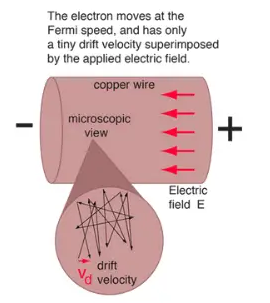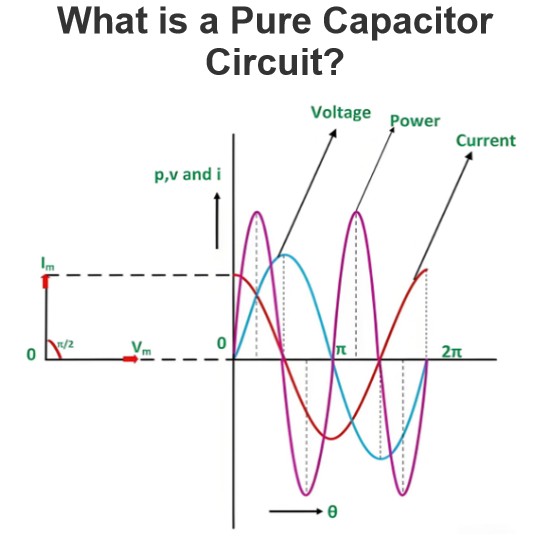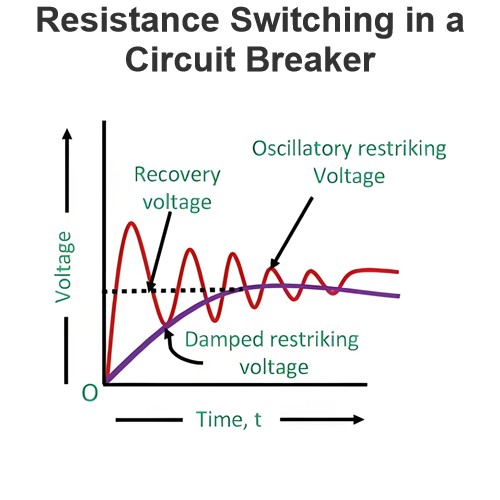What is Drift Velocity?
Drift velocity is defined as the net velocity of a particle that undergoes random changes in direction and speed. This concept is typically associated with free electrons moving within a conductor. Imagine these free electrons traversing the conductor with arbitrary speeds and in random directions. When an electric field is applied across the conductor, the haphazardly moving electrons encounter an electrical force aligned with the field direction.
This applied field, however, doesn’t curtail the random nature of electron motion. Instead, it compels them to gravitate towards higher potential while retaining their random motion. Consequently, the electrons drift towards the higher potential end of the conductor alongside their random movements.
This results in each electron acquiring a net velocity towards the conductor’s high potential end, referred to as the drift velocity of electrons.
The ensuing electrical current, due to this electron drift within an electrically stressed conductor, is termed the drift current. It’s worth noting that every electrical current is fundamentally a drift current.
The Relationship between Drift Velocity and Electron Mobility
Consider any conductive material, such as metal, at room temperature. It always houses some free electrons. More scientifically, a substance, if conductive, must contain at least a few free electrons at any temperature above absolute zero.
These free electrons within the conductor navigate randomly, frequently colliding with larger atoms and altering their motion direction.
When a steady electric field is introduced to the conductor, the electrons start gravitating toward the positive terminal of the applied electrical potential difference, commonly known as voltage. This electron movement, however, is not in a straight line.
As the electrons move toward the positive potential, they continuously collide with atoms and deflect randomly. Each collision results in a loss of some of their kinetic energy, which they regain due to the electric field’s influence, re-accelerating them towards the positive potential.
Further collisions lead to a similar loss and subsequent regain of kinetic energy. Therefore, while an applied electric field can’t halt the electrons’ random motion within a conductor, it does generate a net drift of electrons toward the positive terminal.
In simpler terms, the applied electric field causes the electrons to drift toward the positive terminal, giving them an average drift velocity. As the intensity of the electric field escalates, the electrons accelerate more quickly toward the positive potential post each collision. Consequently, the electrons gain more average drift velocity towards the positive potential, or in the direction opposite to the applied electric field.
Here, if ν represents the drift velocity and E symbolizes the applied electric field, electron mobility, denoted by μe, can be understood as the ratio of ν to E.

Where μe is referred to as electron mobility.
Drift Velocity, Drift Current, and Electron Mobility: An Animation
The persistent flow of electrons, caused by drift velocity, leads to the formation of what is known as drift current.
Through clear understanding and further exploration, the interconnected concepts of drift velocity, drift current, and electron mobility can be appreciated for their critical roles in the world of electronics and physics.
The current caused by the steady flow of electrons due to drift velocity is called drift current.

Source: Electrical4u
Statement: Respect the original, good articles worth sharing, if there is infringement please contact delete.
Electrical4U is dedicated to the teaching and sharing of all things related to electrical and electronics engineering.













